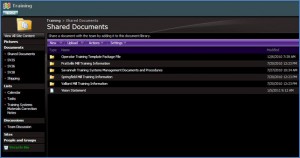Companies seeking to expand their market share must be able to display to customers a commitment to quality and consistency as well as an ability to control every step of the process and deliver a high-quality product consistently. It is for this reason that businesses are willing to invest the time and effort to develop and implement a Total Quality Management (TQM) System model to enhance their opportunities.
Since the benefits of TQM are well-known in the marketplace, having an active program signals to customers that a business is not only serious about continuous process improvement and customer satisfaction, but that it has the structure in place to reinforce that commitment.
To maintain an atmosphere of continuous improvement, a quality management system needs, at a minimum, a workplace culture that embraces change and is always seeking to improve its product based on customer feedback. Standard operating procedures must be established, controlled, and followed, vital equipment must be maintained to exacting standards and checked on a regular basis, suppliers from which the business gets its input materials must be certified and occasionally re-evaluated, employees must be properly trained on procedures, system or product failures must be analyzed and corrected with documented actions using time-proven failure analysis methodology, and practices must be established to deal with non-conforming products.
Needless to say, quality systems can be time-consuming and labor-intensive to build. Businesses often fall short of a complete quality management system because they underestimate the time required to establish and maintain a system, are understaffed, or have limited capital to invest in such an undertaking. There are, however, quality management software programs available that have been developed to aid companies in structuring a TQM program.
Quality management software is available for every level of process complexity, and can be as generic or intricate as a business needs it to be. For businesses that have established programs and are just looking to standardize and simplify document control, a document management system may be all that is necessary, and such programs are readily available. For companies starting from the ground floor to develop quality systems, entire suites are available, pre-packaged, that provide templates for every aspect of documentation from procedures to training, quality manuals to internal audits. Such programs can minimize the amount of effort required of a business to develop a working quality system.

Microsoft SharePoint Document Management System
Document management systems (DMS) and pre-packaged quality documentation suites can be integrated with other programs such as root-cause analysis databases, learning management systems, and email/tickler systems. Root cause failure analyses (RCFA) programs can help track corrective actions, assign responsibilities, and send reminders to action owners of impending or overdue deadlines. Learning management systems (LMS) can house required training guidelines, track training and recertification requirements for employees, provide computer-based training modules that employees can complete as time allows, document and maintain employee training records, and send out reminders, notices, or exception reports of non-compliance. Such systems eliminate the need for formal classroom training that is time and labor-intensive. Stand-alone DMS, LMS, and RCFA computer-based software suites can be customized and integrated as necessary to satisfy a particular business’s need, or can be purchased and utilized as all-inclusive programs.
Software for quality management system establishment and control can provide a huge benefit to businesses with limited resources, time, and money. Even large businesses with available time and money to establish a program can profit by having the entire system computerized using commercially available software. While the overall establishment of a quality program remains firmly in the hands of the business, implementing the system, once built, can be greatly simplified by taking advantage of existing computerized systems and suites. Software developers have devoted a lot of time to building quality management software that is comprehensive, easy to use, and customizable based on a company’s product. Overlooking such robust systems can be a huge disservice to a business and its customers alike.
>> Back to Quality Management Software